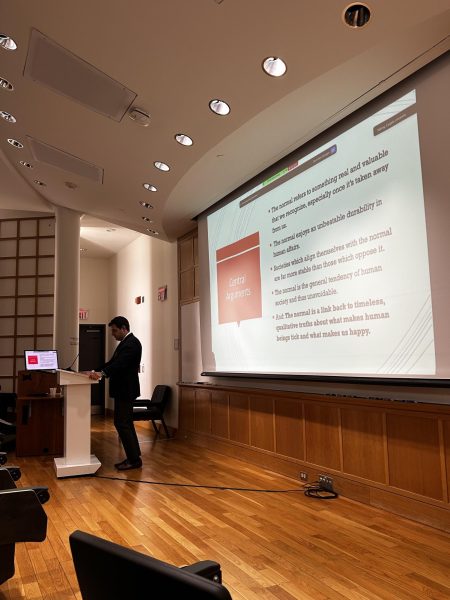Medical Research an Increasing Part of Undergraduate Study
Colgate has always prided itself on being a small liberal arts school with large university resources. For both students and faculty involved in human health research, this certainly seems to be the case.
“Despite the fact that Colgate is a small university and that scientific research at Colgate is powered by undergraduates, our students conduct important, high-quality research that has relevance to human health,” Assistant Professor of Biology Priscilla Van Wynsberghe said. “In addition, our students have access to cutting-edge scientific equipment with which to conduct their research, present their research at national and international scientific meetings and publish their research in widely respected scientific journals.”
While not always widely recognized, students’ research at Colgate is making notable advancements in the medical world.
“There is some really cutting-edge biomedical research being performed by Colgate students on campus. The students and their professor present their research at major national and international meetings, and much of the work is published in biomedical research journals,” Raab Family Chair of Biology Kenneth Belanger said.
Associate Professor of Biology Barbara Hoopes elaborated that some of the more advanced work Colgate students are conducting is even more advanced than one might expect for a smaller school.
“Colgate has excellent facilities and resources compared to other liberal arts colleges, and our students do experiments one might expect could only be done at a Research Institution,” Hoopes said.
Hoopes is one of several Colgate professors who oversees a research tutorial, a class of six to eight students who do independent research that relates to the general research question of the professor. Meeting weekly, they discuss relevant papers from the scientific literature and to give presentations about their ongoing research projects.
“My role is to help them learn the techniques they need to address their research question, and meet with them weekly to discuss their results,” Hoopes said. “They write mock grant proposals describing experiments they would do to continue their project, meet as a group to discuss and review the proposals, and present their work in either a talk or a poster at the end of the semester.”
For junior Kat Wolkin, a molecular biology concentration, Colgate’s reputation for a strong science program was what brought her to Colgate.
“You can just walk around the Ho and Olin and look at all the posters to get a sense of the diversity of research Colgate students have conducted. It’s impressive,” Wolkin said.
“There’s a very wide breadth of health-related research opportunities at Colgate, ranging from psychology and neuroscience to molecular biology and ecology and environmental studies.”
Undergraduate researchers agree that their research opportunities are what bridge the gap between undergraduate studies and careers in human health.
“You walk away with a wealth of skills and knowledge applicable to real-world medicine and health. The variety of engaging and challenging research opportunities foster the sort of intellectual qualities that are required for careers in such fields,” Wolkin said. “Students can apply what they have learned in class and experience the trials and tribulations of actual ‘real world’ research, which can be a humbling yet extremely rewarding experience.”
For senior Molly Connors, Colgate’s liberal arts identity actually enhances the quality of research being conducted. Connors hopes to pursue a joint career in medicine and clinical research and believes her experiences at
Colgate have given her the tools and knowledge to succeed.
“Learning about and conducting research at a small, liberal arts school like Colgate allows students to forge intimate, dynamic relationships with professors and research advisers in a way that facilitates and enhances the process of learning to think critically about today’s most difficult research questions,” Connors said. “At Colgate, it’s not merely about learning laboratory techniques or protocols, but rather about learning how to ask the right questions and approach them in creative ways.”
Contact Colin Sheridan at csheridan@colgate.edu.




